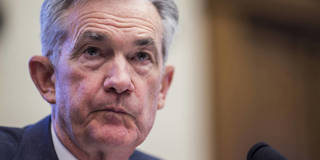In the early 1980s, the chairman of the US Federal Reserve, Paul Volcker, was able to choke off runaway inflation because he was afforded the autonomy necessary to implement steep interest-rate hikes. Today, the Fed is clearly under unprecedented political pressure, and it is starting to show.
CAMBRIDGE – From the early 1980s until the start of the financial crisis in September 2008, the US Federal Reserve seemed to have a coherent process for adjusting its main short-term interest rate, the federal funds rate. Its policy had three key components: the nominal interest rate would rise by more than the rate of inflation; it would increase in response to a strengthening of the real economy; and it would tend toward a long-term normal value.
Accordingly, one could infer the normal rate from the average federal funds rate over time. Between January 1986 and August 2008, it was 4.9%, and the average inflation rate was 2.5% (based on the deflator for personal consumption expenditure), meaning that the average real rate was 2.4%.
The long-term normal real rate can be regarded as an emergent property of the real economy. From an investment and saving standpoint, economic equilibrium balances the benefit from a low safe real interest rate (which provides low-cost credit for investors) against the benefit from a high real rate (which implies higher returns for savers).

CAMBRIDGE – From the early 1980s until the start of the financial crisis in September 2008, the US Federal Reserve seemed to have a coherent process for adjusting its main short-term interest rate, the federal funds rate. Its policy had three key components: the nominal interest rate would rise by more than the rate of inflation; it would increase in response to a strengthening of the real economy; and it would tend toward a long-term normal value.
Accordingly, one could infer the normal rate from the average federal funds rate over time. Between January 1986 and August 2008, it was 4.9%, and the average inflation rate was 2.5% (based on the deflator for personal consumption expenditure), meaning that the average real rate was 2.4%.
The long-term normal real rate can be regarded as an emergent property of the real economy. From an investment and saving standpoint, economic equilibrium balances the benefit from a low safe real interest rate (which provides low-cost credit for investors) against the benefit from a high real rate (which implies higher returns for savers).